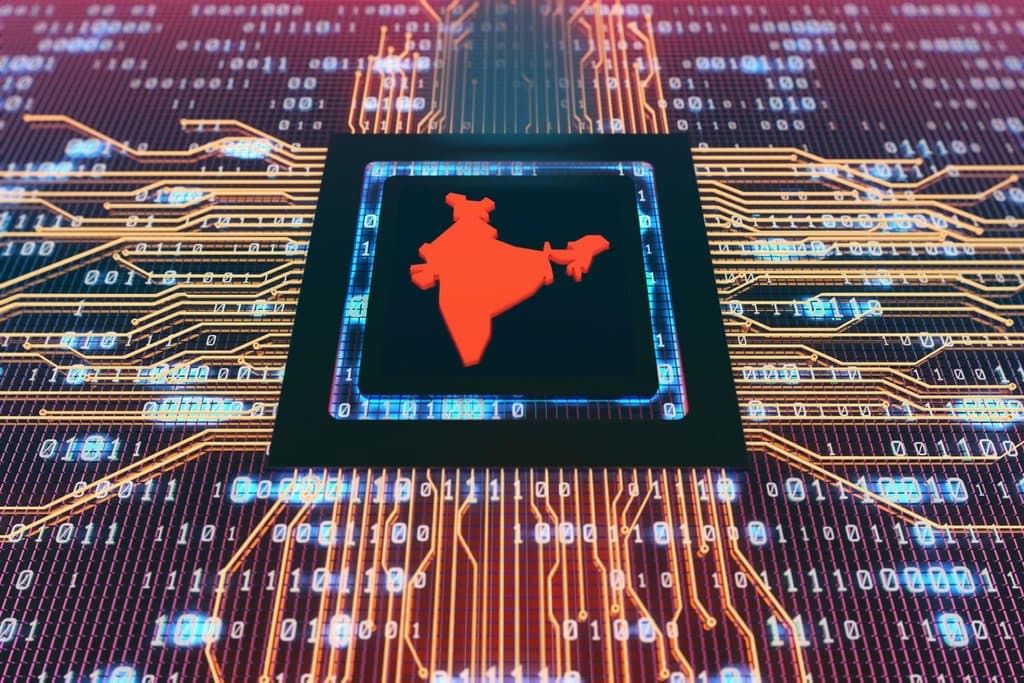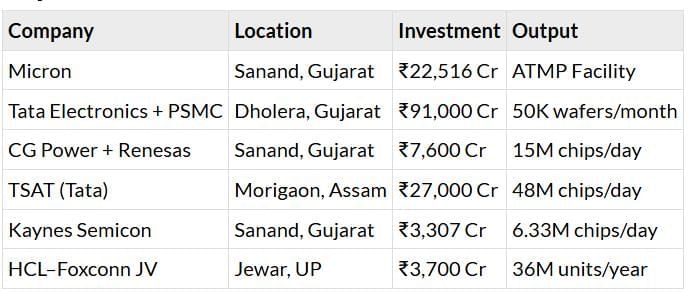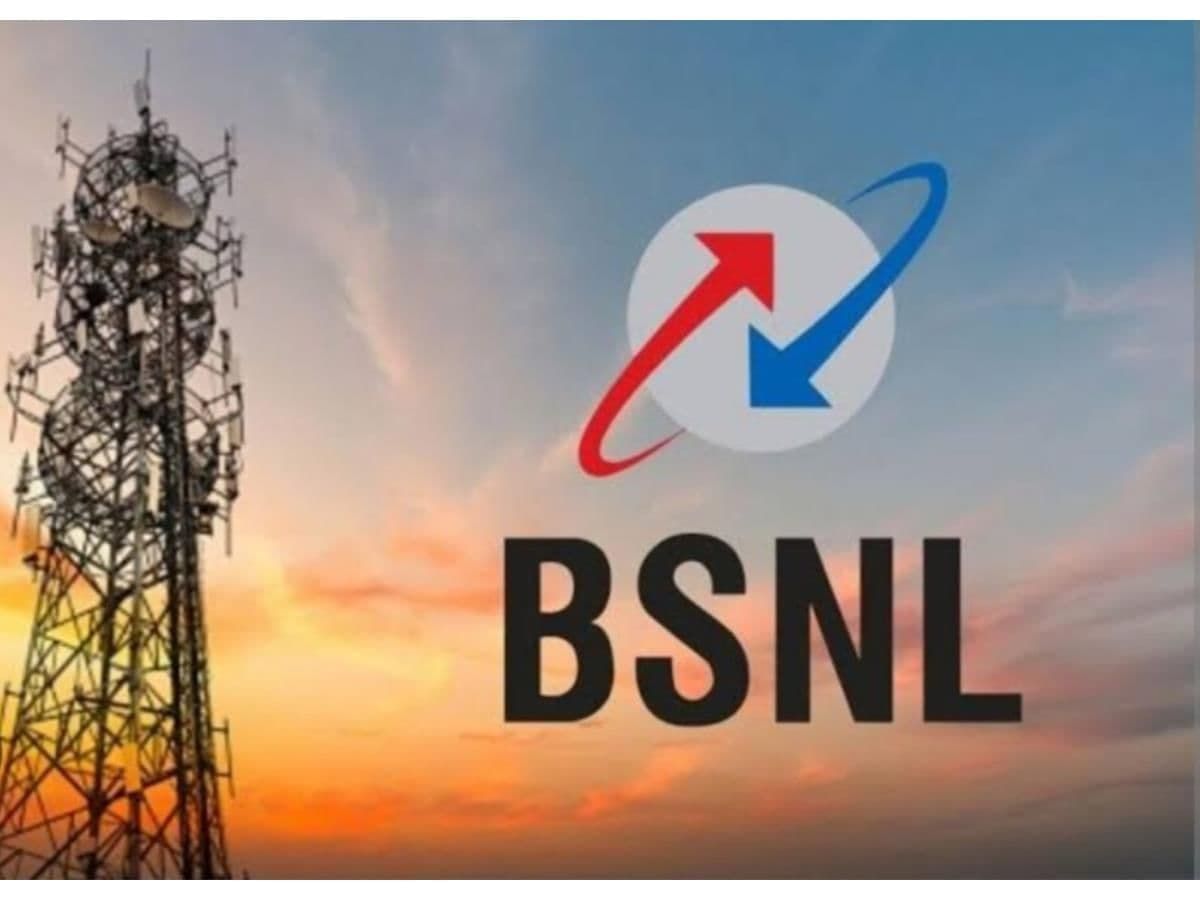UPSC Exam > UPSC Notes > PIB (Press Information Bureau) Summary > PIB Summary - 4th August 2025
PIB Summary - 4th August 2025 | PIB (Press Information Bureau) Summary - UPSC PDF Download
India’s Semiconductor Revolution

Semiconductors: The Strategic Core of Modern Electronics
- Semiconductors are essential for a wide range of technologies, including smartphones, satellites, electric vehicles, smart TVs, and defense systems like Aakash-Teer.
- They function by storing, processing, and transferring data through micro-scale transistors, which can number in the millions or billions.
- For instance, the Vikram Lander of Chandrayaan-3 utilized Indian semiconductor technology and artificial intelligence for its autonomous landing.
The topic is relevant to GS Paper 3 (Technology) and GS Paper 2 (Governance).
Why the Semiconductor Industry is Important Worldwide
- Geopolitical Urgency: The global chip shortage following COVID-19 and the Ukraine war severely impacted industries like automotive, telecommunications, and electronics.
- Concentration Risk: Taiwan produces 60% of the world’s chips and 90% of advanced chips, making it a strategic chokepoint and a source of geopolitical and economic vulnerability.
- Self-Reliant Chip Ecosystems: Countries like the US, EU, Japan, South Korea, and China are pushing to develop their own chip manufacturing capabilities to reduce reliance on foreign production.
India’s Strategic Entry into the Chip Race
- India aims to capture a share of the $1 trillion global chip market by 2030.
- The focus is on developing end-to-end capabilities in chip design, fabrication, testing, and packaging.
Key Initiatives Driving India’s Semiconductor Ambitions
India Semiconductor Mission (ISM)
- Launched in December 2021 with an outlay of ₹76,000 crore.
- Aims to position India as a global hub for electronics and chip design.
- Focus areas include building semiconductor fabs, packaging and testing units, and enabling design startups.
Major Schemes under ISM

Skill Development and Talent Pipeline
- Target to train 85,000 chip design engineers through various initiatives.
- Collaborations with industry leaders and academic institutions to enhance skill development in VLSI and IC manufacturing.
Major Investments in India’s Semiconductor Infrastructure

India’s First Advanced Chip Design Centres (May 2025)
- Locations: Noida and Bengaluru
- Focus: 3-nanometer chip design, advancing beyond previous 5nm and 7nm designs.
SEMICON India Programme
- A flagship platform to showcase India’s ambitions in the global chip sector.
- Various editions held in Bangalore, Gandhinagar, and future editions planned in Greater Noida and New Delhi.
Recent Developments (2025 Highlights)
- Introduction of the first indigenous chip production in 2025, announced at the Global Investors Summit.
- Netrasemi, a chip-design startup under the Design Linked Incentive scheme, secured ₹107 crore in venture capital funding.
- Madhya Pradesh inaugurated its first IT hardware hub with a ₹150 crore investment, focusing on the production of chips, drones, and robotics hardware.
Strategic Impact and Future Directions
Strategic Leverage:
- Reduces dependence on the Chinese and Taiwanese chip ecosystems.
- Enhances India’s digital sovereignty, cybersecurity, and economic competitiveness.
- Integral to initiatives like Digital India, defense modernization, and smart infrastructure development.
Economic and Industrial Gains:
- Projected to create 1 million skilled jobs by 2030.
- Significant contributions to the $300 billion electronics manufacturing target by 2026.
- Positions India as a trusted global supplier within the semiconductor value chain.
Challenges Ahead:
- High capital intensity involved in setting up semiconductor fabs, with costs exceeding $10 billion.
- Ensuring a steady supply of critical resources such as ultrapure water, chemicals, and rare earth materials.
- Competing globally, particularly against established players like TSMC, Samsung, and Intel in terms of design and fabrication technology.
Conclusion
India’s journey in the semiconductor sector is evolving from mere policy formulation to actual production capabilities.
- With robust funding, strong partnerships, talent development, and strategic international relations, India is transitioning from being a consumer to a significant player in the semiconductor industry.
- The India Semiconductor Mission aims to establish the country as a leader in chip design and manufacturing, contributing to various national initiatives and enhancing global competitiveness.
National Cooperation Policy 2025

Contextual Backdrop: Why NCP 2025 Was Needed
- Last Policy Update in 2002: The previous policy became outdated due to factors like digitization, globalization, climate change, and the evolving aspirations of the youth.
- Creation of Ministry of Cooperation (2021): The establishment of this ministry indicated a renewed political and administrative focus on the cooperative sector.
- Participatory Drafting:. 48-member committee led by Suresh Prabhu conducted 17 consultations and 4 regional workshops, gathering 648 inputs from various stakeholders, including federations, state departments, and experts.
India’s Cooperative Landscape (2025 Snapshot)
- 8.44 lakh cooperatives: Breakdown includes approximately 2 lakh credit cooperatives (like PACS and UCBs) and around 6 lakh non-credit cooperatives (in sectors such as dairy, fisheries, housing, etc.).
- 30+ crore members: India boasts the largest cooperative membership globally.
- Global Share: India accounts for over 25% of the world’s cooperatives, with a significant presence in agriculture, rural finance, housing, and marketing.
Vision & Mission
Vision: The aim is to empower cooperatives to drive India’s transformation into a developed nation (Viksit Bharat) by 2047, through the concept of Sahkar-se-Samriddhi (from cooperatives to prosperity).
Mission: To build supportive legal, financial, and technological ecosystems that make cooperatives professional, transparent, inclusive, and ready for market challenges.
Six Strategic Pillars – Foundation of NCP 2025
- Strengthening Foundations: This involves legal reforms, digitizing records, improving governance, and reviving Primary Agricultural Credit Societies (PACS).
- Promoting Vibrancy: Initiatives like creating model cooperative villages, enhancing branding, and developing cooperative clusters are key.
- Future-Readiness: This includes developing a cooperative stack, integrating with platforms like ONDC and GeM, and fostering tech incubators.
- Inclusive Growth: Ensuring representation and participation of women, Scheduled Castes (SC), Scheduled Tribes (ST), and youth in cooperatives is crucial.
- Sectoral Diversification: Expanding the role of cooperatives into sectors like health, clean energy, waste management, and logistics.
- Youth for Cooperatives: Engaging youth through higher education curricula, digital literacy programs, and employment exchanges focused on cooperative sectors.
Legal and Institutional Reforms
- Encourage states to align their State Cooperative Societies Acts with the vision of the National Cooperative Policy.
- Implement digital registries for real-time tracking of cooperatives to reduce fraud and enhance governance.
- Introduce an institutional revival package for cooperatives that are struggling or sick.
Financial Empowerment
- Strengthen the three-tier rural credit structure, which includes PACS (Primary Agricultural Credit Societies), DCCB (District Central Cooperative Banks), and SCB (State Cooperative Banks).
- Promote umbrella organizations like the National Urban Cooperative Finance Corporation to enhance financial support for urban cooperatives.
- Expand the eligibility of cooperative banks to engage in government business such as pensions, direct benefit transfers (DBTs), and subsidies.
Model Cooperative Village & Rural Cluster Strategy
- Encourage the establishment of one model cooperative village in each State/UT to showcase best practices.
- Promote the development of cooperative-led clusters in sectors such as honey, spices, silk, dairy, tea, and others.
- Foster the promotion of a “Bharat Brand” for cooperative goods, creating a national brand strategy for cooperative products.
Digital Tech & Future-Readiness
- Develop a National Cooperative Stack that integrates seamlessly with AgriStack, ONDC (Open Network for Digital Commerce), and GeM (Government E-Marketplace).
- Promote e-commerce platforms specifically for cooperative products to enhance market reach.
- Establish Cooperative Innovation Hubs and Centres of Excellence to foster innovation and best practices in the cooperative sector.
Inclusivity Measures
- Develop Model Bye-laws that promote the inclusion of SC/ST, women, and persons with disabilities (PwD) in cooperative boards.
- Launch awareness campaigns in schools and colleges to promote the benefits of cooperatives and encourage participation from underrepresented groups.
- Implement gender quotas and capacity-building schemes to empower underrepresented groups in the cooperative sector.
Sectoral Expansion into New-Age Areas
The National Cooperative Policy 2025 aims to integrate cooperatives into various new-age sectors, including:
- Clean Energy: Promoting cooperatives in solar energy, biogas production, and ethanol production.
- Waste Management: Establishing cooperatives for solid waste management, liquid waste management, and e-waste recycling.
- Health & Education: Developing cooperatives for schools, diagnostic services, and other health-related services.
- Gig-Economy Aggregators: Creating platforms for gig workers such as plumbers, taxi services, and delivery services through cooperative models.
- Organic/Natural Farming: Encouraging cooperatives focused on organic farming, food processing, and e-logistics for natural products.
Youth-Oriented Cooperative Ecosystem
- Introduce university-level cooperative courses in collaboration with UGC (University Grants Commission) and AICTE (All India Council for Technical Education) to promote cooperative education.
- Develop a National Cooperative Employment Exchange, a digital job portal connecting job seekers with opportunities in the cooperative sector.
- Recruit skilled trainers in areas such as finance, marketing, and governance to enhance the capacity of cooperatives.
- Promote digital and financial literacy among rural youth to prepare them for roles in the cooperative sector.
Implementation & Monitoring Architecture
- Establish a three-tier governance structurefor the rollout of the policy:
- Implementation Cell: Located in the Ministry of Cooperation, supported by a Project Management Unit (PMU).
- National Steering Committee: Chaired by the Union Minister for Cooperation.
- Policy Monitoring Committee: Led by the Secretary of Cooperation, responsible for overseeing the implementation.
- Develop an action plan with timelines for the implementation of the policy.
- Awaiting Action Plan: The detailed action plan is awaited, and states will be involved through Memoranda of Understanding (MoUs) and convergence mechanisms.
Why NCP 2025 Is Transformational

Critical Evaluation
Strengths
- Holistic and future-ready: The NCP addresses legal, digital, and social inclusion aspects comprehensively.
- Youth engagement and gender justice: These are integral to the policy, ensuring broad-based participation.
- Mainstreaming cooperatives: The policy aims to position cooperatives as a central part of the national economy.
Challenges
- Centre-State friction: Since cooperatives fall under Entry 32 of the State List, there may be conflicts between central and state authorities.
- Capacity constraints: Tier-2 and Tier-3 cooperatives may lack the necessary capacity to implement the changes.
- Data infrastructure:. robust data infrastructure is needed for effective implementation and regulatory convergence.
- Financing for tech upgrades: Sustained financing is required for technological upgrades and human resource capacity building.
Conclusion
- The National Cooperation Policy 2025 represents a significant reimagining of India’s cooperative sector. It aims to shift cooperatives from being marginal rural support systems to becoming integral pillars of the Viksit Bharat 2047 vision.
- By combining democratic participation with digital innovation and economic competitiveness, the policy provides a roadmap for inclusive and bottom-up growth.
- With effective implementation and collaboration between the Centre and States, cooperatives have the potential to become a major engine of growth for India.
BSNL and NRL Sign Landmark MoU to Accelerate Industry 4.0 Adoption in India

Overview
- Parties involved: Bharat Sanchar Nigam Limited (BSNL) and Numaligarh Refinery Limited (NRL) signed a pioneering collaboration.
- Venue & occasion: Occurred at the “Industry 4.0 Workshop for CPSEs,” organised by the Ministry of Finance in Guwahati, with senior officials from BSNL, NRL, AMTRON, DPE, and other CPSEs in attendance.
Key Components
- Deployment of 5G CNPN
- India’s first captive non-public network (CNPN) in the refinery sector.
- Aimed at secure, ultra-reliable, real-time connectivity for mission-critical operations.
- Focus on Industry 4.0 technologies
- Technologies include: 5G CNPN, IoT, Digital Twins, AI-driven 3D printing, AR/VR/MR, and Big Data analytics.
- Intended to bolster innovation, operational efficiency, and support Atmanirbhar Bharat.
Analysis for UPSC
- Strategic significance:
- Demonstrates public sector collaboration to lead industrial digitization.
- Lays groundwork for replicable connectivity models across other sectors.
- Policy angle:
- Supports goals of Digital India and Make in India.
- Encourages self-reliant, indigenous deployment of industrial 5G.
- Challenges & considerations:
- Security and data privacy governance within CNPN frameworks.
- Scalability for smaller CPSEs or private sector adoption.
- Policy/regulatory readiness—for instance spectrum allocation and standards.
Way Forward
- Pilot for modern industrial connectivity via in-house 5G can be scaled across CPSEs.
- Government to consider issuing guidelines and policy support structure for broader private and public sector roll-out.
- Integration of these advanced technologies across other sectors (e.g. ports, manufacturing, energy) can accelerate productivity and competitiveness.
The document PIB Summary - 4th August 2025 | PIB (Press Information Bureau) Summary - UPSC is a part of the UPSC Course PIB (Press Information Bureau) Summary.
All you need of UPSC at this link: UPSC
FAQs on PIB Summary - 4th August 2025 - PIB (Press Information Bureau) Summary - UPSC
| 1. What is the significance of India's National Semiconductor Policy in the context of the global semiconductor industry? |  |
Ans. India's National Semiconductor Policy aims to establish the country as a key player in the global semiconductor supply chain, which is crucial for various sectors including electronics, telecommunications, and automotive industries. By promoting domestic manufacturing and innovation, the policy seeks to reduce dependence on imports, enhance technological capabilities, and create jobs, thereby contributing to the nation's economic growth and ensuring national security.
| 2. How does the National Cooperation Policy relate to the semiconductor ecosystem in India? |  |
Ans. The National Cooperation Policy is designed to foster collaboration among various stakeholders in the semiconductor ecosystem, including government bodies, private sector companies, research institutions, and educational organizations. This cooperative approach aims to streamline efforts in research and development, production, and workforce training, ultimately enhancing the development of a robust semiconductor industry in India.
| 3. What are the key components or initiatives included in India's Semiconductor Revolution strategy? |  |
Ans. Key components of India's Semiconductor Revolution strategy include incentives for setting up semiconductor manufacturing facilities, investment in research and development, establishment of semiconductor design and innovation centers, and partnerships with global technology firms. Additionally, the strategy focuses on skill development programs to create a workforce equipped to meet the demands of this high-tech industry.
| 4. What challenges does India face in achieving its semiconductor manufacturing goals? |  |
Ans. India faces several challenges in achieving its semiconductor manufacturing goals, such as inadequate infrastructure, high capital investment requirements, and the need for advanced technology and expertise. Additionally, competition from established semiconductor manufacturing nations and the requirement for a skilled workforce present significant hurdles that need to be addressed to realize the full potential of the semiconductor industry in India.
| 5. How can the semiconductor industry impact India's economy and technological landscape? |  |
Ans. The semiconductor industry can significantly impact India's economy by creating jobs, attracting investments, and fostering innovation across various sectors. As semiconductors are integral to modern technology, a strong domestic semiconductor industry can enhance India's technological capabilities, reduce import dependency, and position the country as a global technology hub, ultimately driving economic growth and improving the overall standard of living.
Related Searches
















